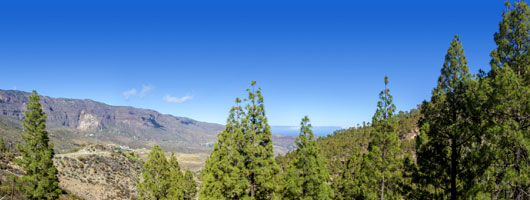The Degollada de la Cruz Grande offers views over two sides, on the one side the Caldera de Tirajana and on the other, the Cuenca de Chira and the Pinar de Pilancones. It forms a crossroads, including the Ruta de la Plata, the ancient footpath along which the migratory cattle farmers would take their herds, linked also to the Route of Saint James, which joined the north and south of the island.

At the Caldera de Tirajana, the most ancient geological debris has been exposed due to erosion, leaving behind a bare Risco Blanco, and shaping the silhouette of the Rompeserones ledges, and the Sepultura del Gigante. The sliding away of geological materials has given rise to the high flat plateaus of Sequero, El Sitio and Llanos de Madrid. Under the shelter of these ravines lie the archaeological settlements of Rosiana, Los Sitios and the Fortaleza de Ansite. In terms of botanical contents in this fertile and farmed valley, there are remains of the palm grove that covered the greater part of this basin in a bygone era. Today the highest spots are covered by Canary pine trees, while the slopes are home to some rare endemic species.

On the other side, at the Parque Natural de Pilancones, taking up the upper part of Ayagaures and the Pinar de Pilancones, is an exceptional landscape with a highly valuable botanical and geological heritage. The main protagonist is the pine tree, followed by the jarón and to a lesser extent the black tajinaste plant. This area also stands out as a specially protected haven for birds, fundamentally for the woodpecker, and is the habitat for the blue chaffinch.
This territory forms part of the World Biosphere Reserve of Gran Canaria, so declared by UNESCO on 29th June 2005.
